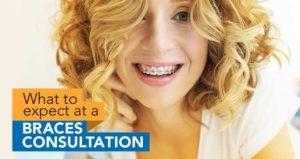A Biased View of Legacy Orthodontics
A Biased View of Legacy Orthodontics
Blog Article
Legacy Orthodontics for Beginners
Table of ContentsExcitement About Legacy OrthodonticsLegacy Orthodontics Fundamentals ExplainedThe 7-Second Trick For Legacy OrthodonticsAn Unbiased View of Legacy OrthodonticsLegacy Orthodontics for Beginners
At Advanced Orthodontics, we supply clients with a alternative therapy experience. Furthermore, we provide flexible treatment timetables, flexible settlement choices and an enjoyable, satisfying experience. invisalign. Telephone call ( 480) 357-4900 today to learn more and timetable an appointment.An orthodontist is a dental expert trained to identify, stop, and deal with teeth and jaw irregularities. Orthodontists work with people of all ages, from kids to adults.
Malocclusion, or misaligned teeth, can bring about oral problems, including dental caries, gum tissue illness, and hard or uncomfortable eating. However not everybody is birthed with straight teeth. If you have a poor bite or large areas in between your teeth, you might wish to speak with a dental professional focusing on orthodontic care.
Legacy Orthodontics Can Be Fun For Anyone
( Picture Credit Report: DigitalVision/Getty Images) Orthodontists utilize fixed and detachable dental devices, like dental braces, retainers, and bands, to transform the setting of teeth in your mouth. Orthodontic treatment is for dental abnormalities, consisting of: Crooked teethBite issues, like an overbite or an underbiteCrowded teeth or teeth that are too much apartJaw misalignmentThe objective of orthodontic treatment is to boost your bite.
While you could assume of orthodontists as mainly for youngsters or young adults who need braces, they can correct oral troubles at any type of age. Orthodontists attend college, dental college, and orthodontic school.
All orthodontists are dental practitioners, but not all dental experts are orthodontists. Orthodontic residency programs supply intensive, focused direction for oral specialists. They focus on two locations: Just how to appropriately and safely move teeth Just how to appropriately assist growth in the teeth, jaw, and faceOnce an orthodontist has actually finished training, they have the option to become board licensed.
Excitement About Legacy Orthodontics
Misalignment, or malocclusion, is one of the most common reason people see an orthodontist. It is hereditary and is the result of size differences in between the top and lower jaw or in between the jaw and teeth. Malocclusion causes tooth overcrowding, an irregular jaw, or irregular bite patterns. Malocclusion is generally treated with: Your orthodontist attaches metal, ceramic, or plastic square bonds to your teeth.
Some people require a headgear to assist move teeth into line with pressure from outside the mouth. A retainer is a custom-made tool that keeps your teeth in place.
They're most frequently used on youngsters. They can create extra space in the mouth without needing to draw teeth. If you have a significant underbite or overbite, you might need orthognathic surgery (likewise called orthodontic surgery) to extend or shorten your jaw. Orthodontists utilize cords, surgical screws, or plates to support your jaw bone.
You may need to see an orthodontist if you have: Crowding or not adequate area for every one of your teethOverbite, when your upper teeth come your base teethUnderbite, when your bottom teeth are too far forwardSpacing or concerns with gapsCrossbite, which is when your top teeth fit behind your base teeth when your mouth is closedOpen bite or a vertical space in between your front base and top teethMisplaced midline, when the center of your base and top teeth don't line up Fixing a dental malocclusion can: Make attacking, eating, and talking easierImprove the symmetry of our face and your general appearanceEase discomfort from temporomandibular joint problemsSeparate your teeth and make them easier to clean up, aiding prevent tooth decay or tooth cavities It's frequently a dental professional that first notices misaligned teeth during a routine exam.
Some Known Details About Legacy Orthodontics

Throughout your initial orthodontic examination, you'll likely have: An oral examPhotos taken of your face and smileDental X-raysPanoramic (360 degree) X-rays of your face and headImpressions to produce molds of your teethThese tests will assist your orthodontist understand just how to proceed with your treatment. orthodontics. An orthodontist is a dental expert that's had training to treat your teeth and jaw
An orthodontist is concentrated on your bite, so something like a damaged tooth would be handled by a dental expert. Orthodontists are concentrated on your bite, or the method your teeth fit with each other, and the straightness of your teeth.
Ever before asked yourself just how celebs constantly appear to have perfectly straightened teeth? The response frequently hinges on the experienced hands of an orthodontist. What precisely does an orthodontist do? Orthodontists are dental experts that concentrate on correcting abnormalities in the teeth and jaws. Their expertise goes past simply producing a lovely smile; it includes improving your general oral wellness and function.
The Basic Principles Of Legacy Orthodontics

While dental braces are one of the most typically identified orthodontic therapy, orthodontists have a varied toolkit at their disposal. The certain strategy chosen depends on the seriousness of the case, the client's age, and individual choices. These tried-and-true dental braces use a system of braces adhered to the teeth and attached by cords.
These removable trays are personalized to gradually shift the teeth's placement. In situations of narrow jaws, palatal expanders can be made use of to create area for proper tooth positioning.
Report this page